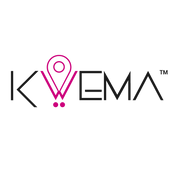In a previous blog, we shared our findings on some of the most common hazards that put farmworkers at risk and we concluded that agriculture is one of the most dangerous industries. Currently, with the situation, we are living in, COVID-19 has added to the list of hazards that workers face every day within this industry and its impact in the US has been tremendous.
According to the National Center for Farmworker Health, there is no comprehensive national reporting of COVID-19 cases in the agricultural industry, but Purdue University estimates that more than 133,000 agricultural workers have tested positive for COVID-19 nationwide. Moreover, many cases of COVID-19 outbreaks within farms have been reported in the media.
For instance, California experienced one of the largest occupational fatalities during COVID-19 on a poultry farm located in Merced County. Investigations determined that the company had ignored most of the health recommendations for COVID-19 and the public health authorities ordered a temporary shutdown after identifying at least 392 positive cases of COVID-19 and 8 deaths due to the outbreak.
Given the nature of the work activities, there are many factors can affect farmworkers' health in contracting COVID-19 at their job site. Some of these risks include working in close contact with coworkers during long periods, sharing transportation, living in shared housing, sharing common objects needed for work such as tools, tractors, and equipment, as well as the lack of access to water for hygiene purposes.
To help employers in the agriculture industry to reduce the exposure of COVID-19 at their workplace, we share with you you some useful key steps based on the CDC guidelines that you can conduct to protect workers’ health:
Promote hygiene protocols
Educate employees on proper hygiene practices to avoid virus spread at the workplace such as maintaining a minimum of 6 feet of distance from other coworkers, following sneeze and cough etiquette, daily washing their hands before and after work, eating and breaks, avoiding share personal items with others like food, dishes, gloves, and provide training in the use of PPE in the work environment.
Modify work areas and provide adequate resources
Make sure workers have enough access to handwashing facilities equipped with soap, portable water, and single-use towels. To increase the frequency of handwashing, provide hand sanitizer at your workplace. If it’s possible, consider installing multiple sanitizing stations on the farm as well as physical shields or barriers to ensure social distancing between workers.
Consider monitoring workers’ symptoms
Another key measure to maintain a healthy workplace is conducting formal health-checks procedures before employees enter into the facilities and in shared transportation. You can check their temperature and ask them if they have experienced symptoms related to COVID-19 in the past 24 hours. Remember always to encourage your workers not to come to work if they feel sick and notify you immediately and follow community health recommendations.
Perform cleaning and disinfection routines
Develop daily cleaning and sanitation protocols for common areas such as lunchrooms, meeting rooms, offices, shipping facilities, and bathrooms. Other high-touch surfaces, tools and equipment such as door handles, vending machines, handheld hoes, crates, milking equipment, animal harnesses and vehicles must be cleaned and disinfected as well.
As we previously mentioned, farms can become potential places with higher levels of COVID-19 transmissions, especially if employees perform activities in a closed environment where people are in close contact for a long period. The best measure to prevent potential outbreaks at your workplace is identifying COVID-19 cases and any person who was in contact with them as soon as possible.
Kwema helps to prevent potential COVID-19 outbreaks at farms with Contact Tracing functionality. If someone is diagnosed positive for COVID-19, our technology allows you to trace where the employee was, identify who they may have come into contact with and classify all employees into 3 groups of risk and take action to prevent spread.
Watch how Kwema is disrupting workplace safety
Photo by Quang Nguyen Vinh on Pexels
